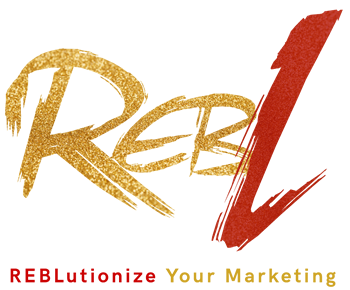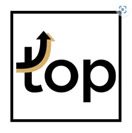What are the biggest challenges of a modern-day digital marketing strategy?
If you’re trying to develop a modern-day digital marketing strategy, you might feel like it seems overly complicated. In reality, current strategies and techniques just require a different approach than they have in years past if you want to make an impact.
In this blog we’re going to discuss the history of modern digital marketing and the latest strategies and tactics we leverage for our agency as well as the marketing professionals and clients we work with.
Stay Current on Marketing Trends to Stay Relevant
We’ve said it before, and we will continue to say it. Marketing has become more complex. What does this mean for the average marketing professional or marketing agency? It means that you are going to have to stay ahead of the latest marketing trends and technology to make the best strategies and tactics attainable.
Digital marketing is any marketing that takes place online – and online is where most people are. Digital marketing can be complicated, and the reason for this is due to the fact that there are so many more options that can be used as part of your strategy these days. This includes a website, social media, email marketing, Pay Per Click advertising, display ads, video, and so much more.
A Brief Digital Marketing History
Let’s start with a little history on Modern/Digital marketing:
- 1971: Invention of Email – mostly used by DARPA
- 1982: The First E-commerce Site
- 1991: World Wide Web
- 1995: Rise of E-commerce / Amazon.com and eBay (then known as AuctionWeb) both launch. An earlier BBS-based store (Book Stacks Unlimited) relaunches as www.books.com.
- 1997: The First Pop-Up Ad
- 1999: Crackberry (The first widely-adopted smartphone, the Blackberry 850 introduced mobile internet to the masses.)
- 2007: User Behavior Tracking (Facebook launches Beacon)
- 2017: Online Ad Revenue Surpasses TV
The fun timeline shown here was created by Disco Sloth. There are a lot more interesting moments in marketing history on this timeline, which you can check out here.
Shifts in the Digital Marketing Landscape
According to the Digital Marketing Institute, the creation of the World-Wide Web, Big Data, Smartphones, Access to Information Transparency, Personalization and Agile Marketing were pivotal events that changed the landscape of marketing forever over the course of this timeline.
As a matter of fact, access to Information Transparency has made customers smarter and more likely to research products in seconds, easily comparing competitors, reviews and price shopping for the best deals. For sales professionals, this shift is proving to be a challenge, as 70% of the buyer’s journey is completed before a buyer even reaches out to a salesperson.
As a consumer, transparency and being able to research a product or service before you reach out to the company is a huge advantage. As a business and marketer, you do have the challenge of customers price shopping, but if you understand YOUR buyer’s journey can use this to your benefit. This is where having a strong in-bound marketing content strategy will help.
Along with Information Transparency, SEO improvements have made keyword stuffing and spammy backlinks a thing of the past, paving the way for real value and good content to become a more authentic marketing style.
Other pivotal moments in marketing history include the birth of Google, Facebook, YouTube, AI, Influencers, VR, AR and more. We could spend hours going through the list of pivotal marketing strategies and tactics that have developed over the last 5-10 years. For the sake of time, let’s focus on the high points and resources you can use to help you develop, update and elevate your marketing strategy in the near future.
Start with the Basics of Marketing Strategy
Set Goals
The one thing we’ve always done for our clients and ourselves is to stick to the basics. What does that mean? Start with setting clear and concise SMART goals, which means goals that are: Specific, Measurable, Achievable, Realistic, and Timely.
Understand Your Target Audience
The next step is to make sure you really understand who your target audience is, and where they get their information about the products or services you sell.
Establish a Marketing Budget
You also have to make sure you know what your budget is. Unless you have a large budget – don’t try to do everything at once. You may have to be selective about how you spend your budget and try different things over a period of time to see what works best.
Good Marketers Implement, Test, & Adjust
The key to marketing tactics is sometimes you need to just implement, test, and adjust as you go. There is no magic pill. Part of the discipline of marketing is testing various tactics, monitoring the analytics and adjusting or changing tactics as you go.
Marketing Low Hanging Fruit
99 Firms offers these stats to help you understand what your colleagues and competitors are doing and find helpful within their marketing strategy and execution.
Email Marketing: B2B email marketing produces the highest ROI.
Truly, this is no surprise. If you’ve built your email list well, the contacts on the list are warm leads, partners, supporters and clients. They are already warm to your message and want to hear it and share it.
Allocate Funds: Most B2B companies dedicate 5% of their budgets to marketing.
We are often asked “what is a reasonable budget for marketing?” This is a great benchmark to help you set a budget for the year. Another way to determine your budget, from a Forester Study, is to recognize that on average most businesses are spending 2-3% of their annual revenue on marketing. This will help your discussion with a client or your boss when discussing budget planning.
Other key stats include:
- Refine Your Website: In 2020, the top area of marketing spending was website development (70% of business buyers find content directly on the vendor’s website).
- Over 70% of business buyers watch videos to complete their product or service research.
- Content marketing was the most popular B2B marketing strategy in 2020.
- 62% of B2B marketers say they’ve seen ROI from paid ads on social media.
- LinkedIn is the most effective platform for B2B lead generation.
- 96% of marketers using influencers consider it successful.
If you don’t have a big budget and you can’t test a lot of different tactics all at once, utilizing these stats to help you develop a marketing strategy and to weed out tactics that don’t work for your industry, phase of business, or available resources, can be a good place to start.
Top Marketing Channels
Another resourceful survey was the Chief Marketer B2B Outlook Survey.
This annual survey shows how top companies find prospects among all of the B2B marketing challenges. There is a lot of great info here on the top channels that businesses are finding useful, how they are splitting up their marketing budget, and how they are creating content to fuel their campaigns. Here are a few of our favorite stats from the Survey:
When it comes to channels . . . Channels that produce the most leads:
- Search
- Live Events
What KPIs should you pay attention to – Metrics that matter the most in marketing attribution:
- Cost of Conversion
- Amount of time to convert
- First click
And what about the types of MARTECH people are using:
- Marketing Automation
- Video
- Email Marketing
Read the full study HERE.
Top 5 Goals
According to the latest HubSpot State of Marketing Report, when it comes to running campaigns, here are the top 5 goals marketers are trying to achieve.
- Brand awareness
- Increase sales
- Increase engagement
- Lead generation
- Increase revenue
Lead Gen is the top priority and marketers are using brand awareness powered by engaging content to drive their campaigns. Our personal favorite is video.
Marketing Automation
Here’s another interesting stat: marketing is the largest business area using automation, with marketers using automation 76% more than the sales team and 139% more than the finance department. (Go get ‘em, marketers — work smarter not harder!)
If a company truly wants to grow and enable the marketing and sales team, it needs to implement some type of CRM and marketing automation tool such as Salesforce, HubSpot, Pardot, even more specialized platforms such as Kennected or Octopus for LinkedIn, and Later and Sendible for social media. We’ve been using tools like Later & Sendible for years, which creates efficiencies for our team and the client’s budget. Automation is the best way to not only manage, but analyze data, and test content. It makes it much easier to monitor campaigns and adjust as needed.
Content Marketing
Marketers are also investing in content marketing more than ever. 82% report actively using content marketing. Following a year of virtual everything, from school to job interviews to shopping, video reigns supreme in the content marketing space once again. Video is the primary form of marketing media being created today, followed by blogs – which are used by more than half of marketing teams – and infographics.
If you are part of the 21% of marketers who are dedicating budget to marketing headcount, consider candidates who are comfortable with multimedia content creation, video editing, and the latest best practices and trends in content marketing strategy.
Video Marketing in High Demand
One thing that has remained constant, however, is the demand for video marketing. Video continues to be an essential tool marketers leverage to communicate and connect with their audiences and customers.
Your audience is hungry for video content, so give them what they want! If you haven’t started investing more in video content across your marketing funnel, now is the time. Yes, video can be used to entertain and inspire; but it can also be used to educate, empower, and drive real results for your organization.
Marketers today are really leaning into video throughout the entire funnel. The number of videos using conversion tactics increased by 30% in 2020 and continues to grow. When it comes to driving engagement, video conversion tactics placed at the beginning of videos had the highest conversion rate at 12.7%.
For example,
- Conversion point #1:post a video on LinkedIn, there is a call to action that drives people to
- Conversion point #2: a landing page. on the landing page is a video and
- Conversion point #3 the contact form.
So you can see how video as a tactic is upping the game at each point.
Convert your Audience
Marketers also found that email collection forms were the most successful at converting viewers, with a 15% conversion rate. This finding correlates with the increase in video content consumption overall, suggesting that viewers are more than willing to hand over their email if the content is compelling enough. Integrating video into your overall marketing strategy is so important.
We hope the information we’ve shared today will help take some of the complexity out of creating a digital marketing strategy for the audiences you are trying to reach. As we come to the middle of the year, use industry research to help guide you as you plan the rest of the year and into next year.
Try new things like Video, adding an AI chatbot to your website, using an influencer, etc. Be open to testing different tactics so you can learn.
Talk to your customers by sending out more surveys or calling them. Look at your data. Adjust and refine.




